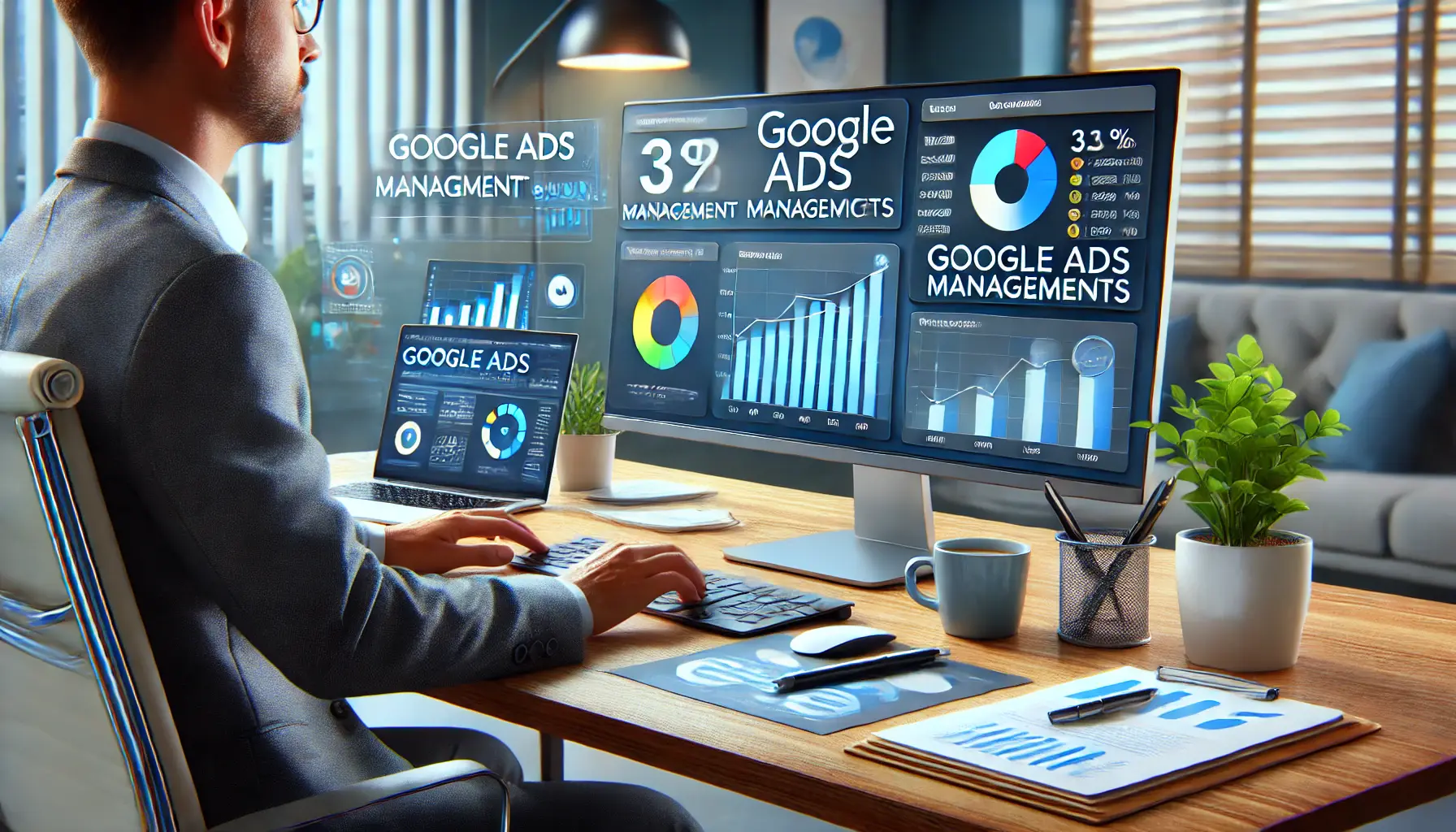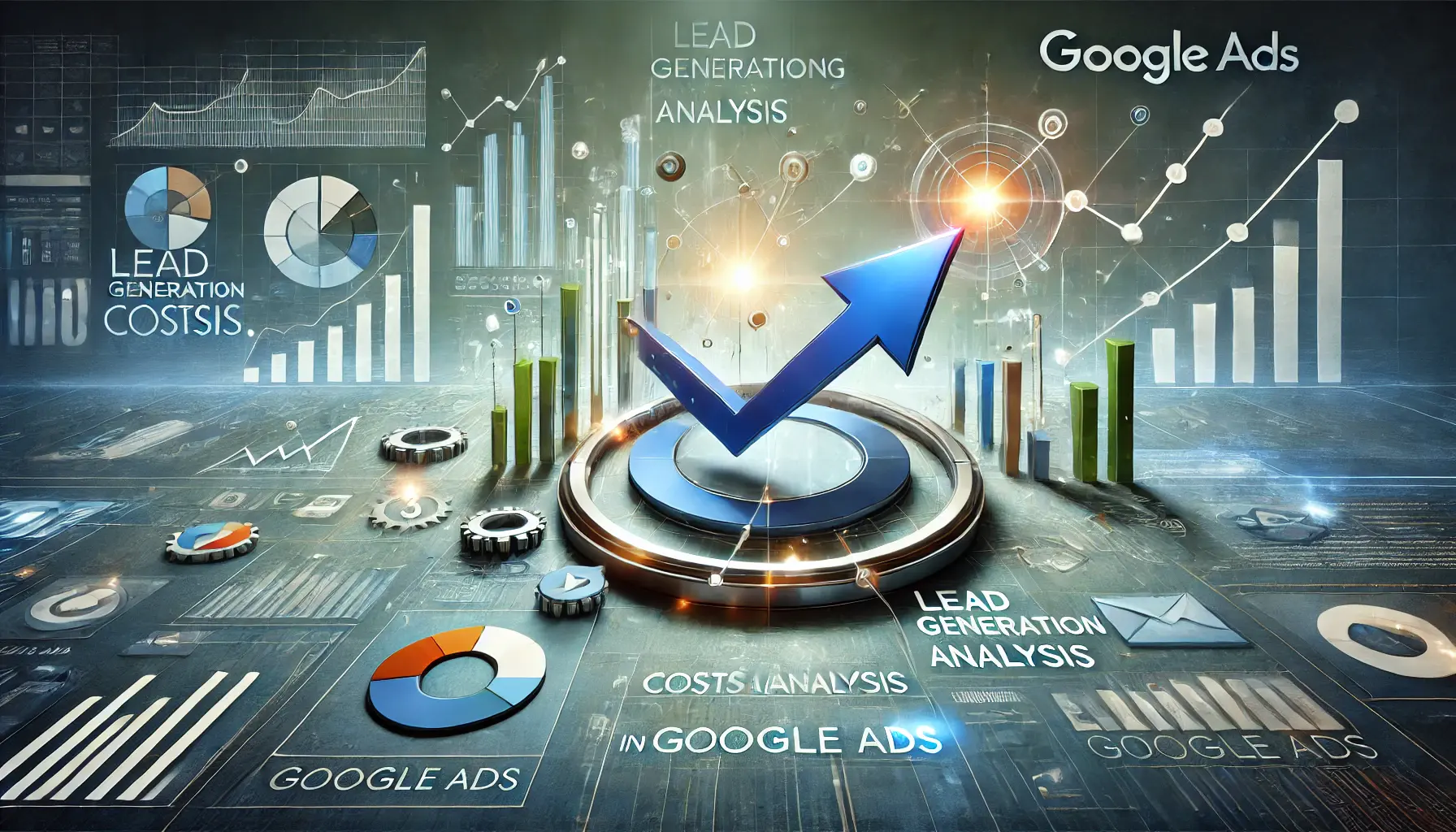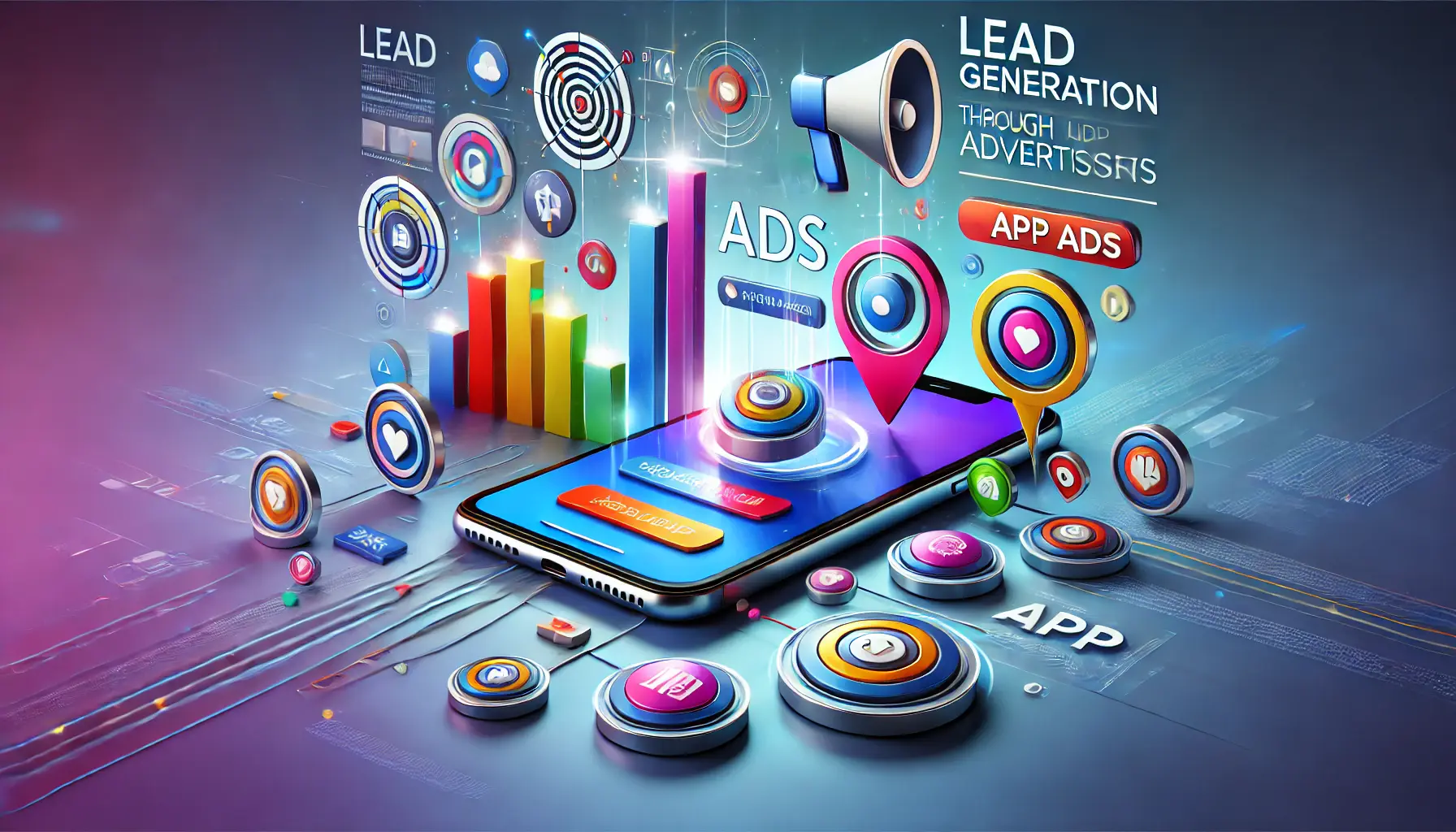A key approach to maximizing the effectiveness of display ads is to drive down Cost Per Lead (CPL).
When CPL gets too high, you’re spending more than necessary to capture a lead, cutting into your ROIReturn on Investment, a measure of profitability in advertising. and reducing growth.
Conversely, effectively driving CPL lower can yield much better performance from your display ad campaigns.
In this article, we’ll explore four powerful methods for reducing CPL in display ads, helping you get the most value out of every dollar spent.
By optimizing audience targeting, improving ad quality, selecting strategic placements, and utilizing data analytics, you’ll be able to capture more leads at a lower cost and increase your marketing ROI.
- Understanding Cost Per Lead in Display Advertising
- Targeting the Right Audience to Lower Cost Per Lead
- Optimizing Ad Formats and Placement to Reduce Cost Per Lead
- Enhancing Ad Quality to Lower Cost Per Lead
- Leveraging Data Analytics to Reduce Cost Per Lead
- Summary: Reducing Cost Per Lead in Display Advertising
- Display Advertising Cost Per Lead Reduction: Frequently Asked Questions
Understanding Cost Per Lead in Display Advertising
Before we detail ways to reduce Cost Per Lead, let’s clarify what CPL means and why it is such a meaningful metric in digital advertising.
Cost Per Lead represents the amount spent for each lead generated—a potential customer filling out a form or even just signing up for a newsletter, for example—any action that indicates interest in your business.
A lower CPL means you’re generating leads more efficiently, which is a key objective for any ad campaign.

Visual representation of Cost Per Lead in digital advertising metrics.
What is Cost Per Lead and Why It Matters
Cost Per Lead is a metric used to assess the efficiency of advertising efforts, especially for campaigns aiming to convert viewers into leads.
In simple terms, CPL is the amount you pay for each lead generated through your ads.
If this cost is too high, it might indicate that your ads are not reaching the right people or that your targeting needs improvement.
On the flip side, a low CPL can help you get more leads on the same budget, securing a better return on investment for your advertising.
- Better Budget Utilization: With a low CPL, you can manage your budget better by concentrating resources on channels and methods that yield more leads.
- Higher Return on Investment: Once you optimize CPL, the ROI increases, meaning that with every dollar spent, the value created will rise.
- Improved Campaign Efficiency: With a lower CPL, your campaign becomes more efficient, allowing you to reach more potential customers without overspending.
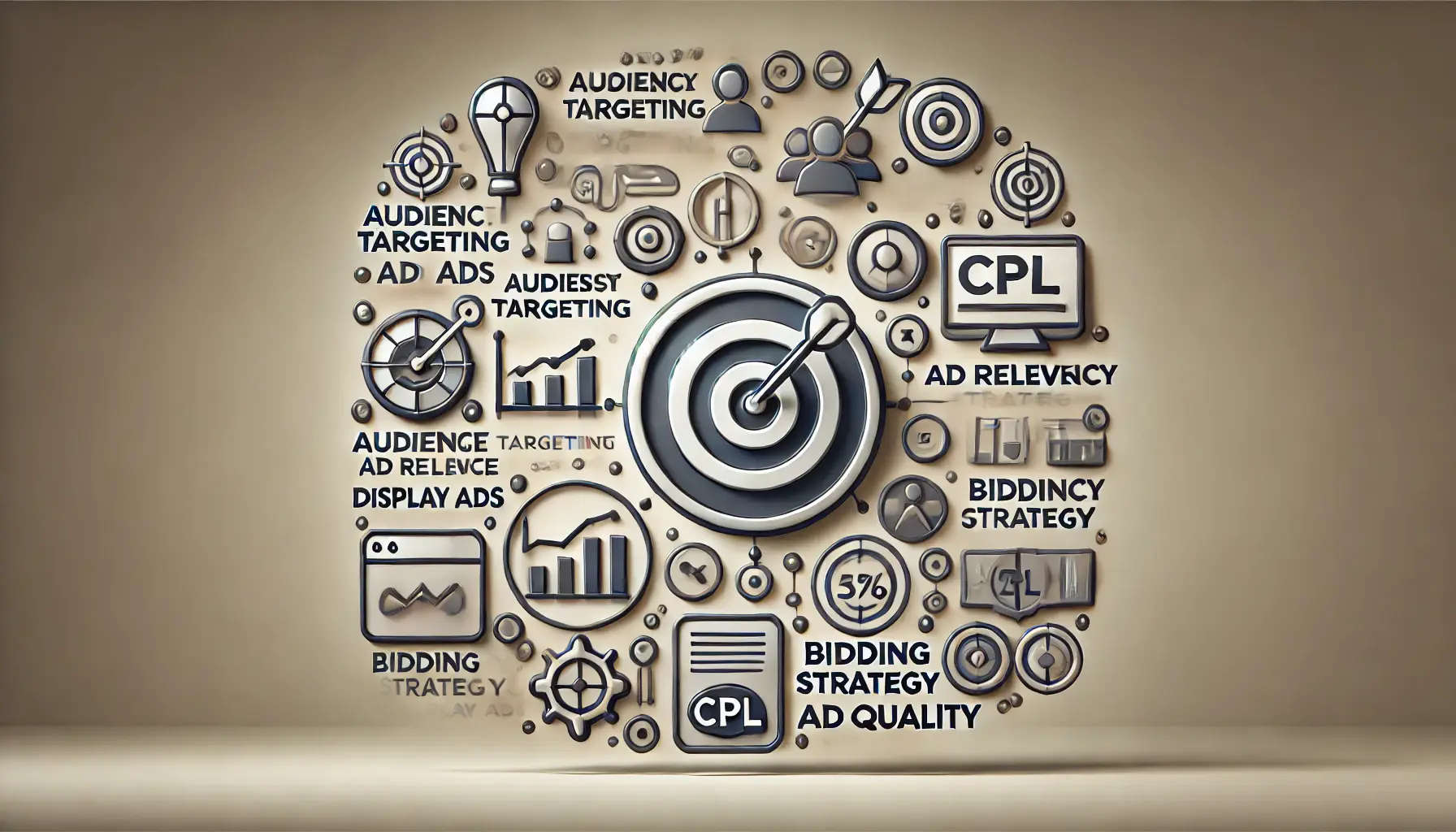
Visual representation of the various factors that affect Cost Per Lead in display advertising.
Factors Affecting Cost Per Lead in Display Ads
Several factors influence your CPL in display advertising.
Knowing these factors helps you identify areas for improvement in your campaigns.
For example, CPL can depend significantly on targeting accuracy, ad quality, and bidding strategy.
Below are major elements that impact the Cost Per Lead:
- Audience Targeting: Reaching the correct audience ensures you don’t spend money on uninterested viewers.
- Ad Relevance: The more relevant your ad is to your audience, the better the engagement, leading to a lower CPL.
- Bidding Strategy: Your chosen bidding strategy, whether bidding per click or per impression, can impact CPL.
- Ad Quality and Format: High-quality ads tend to perform better and can reduce your CPL on average.
- Landing Page Experience: A seamless, relevant landing page experience leads to higher conversion rates and a lower CPL.
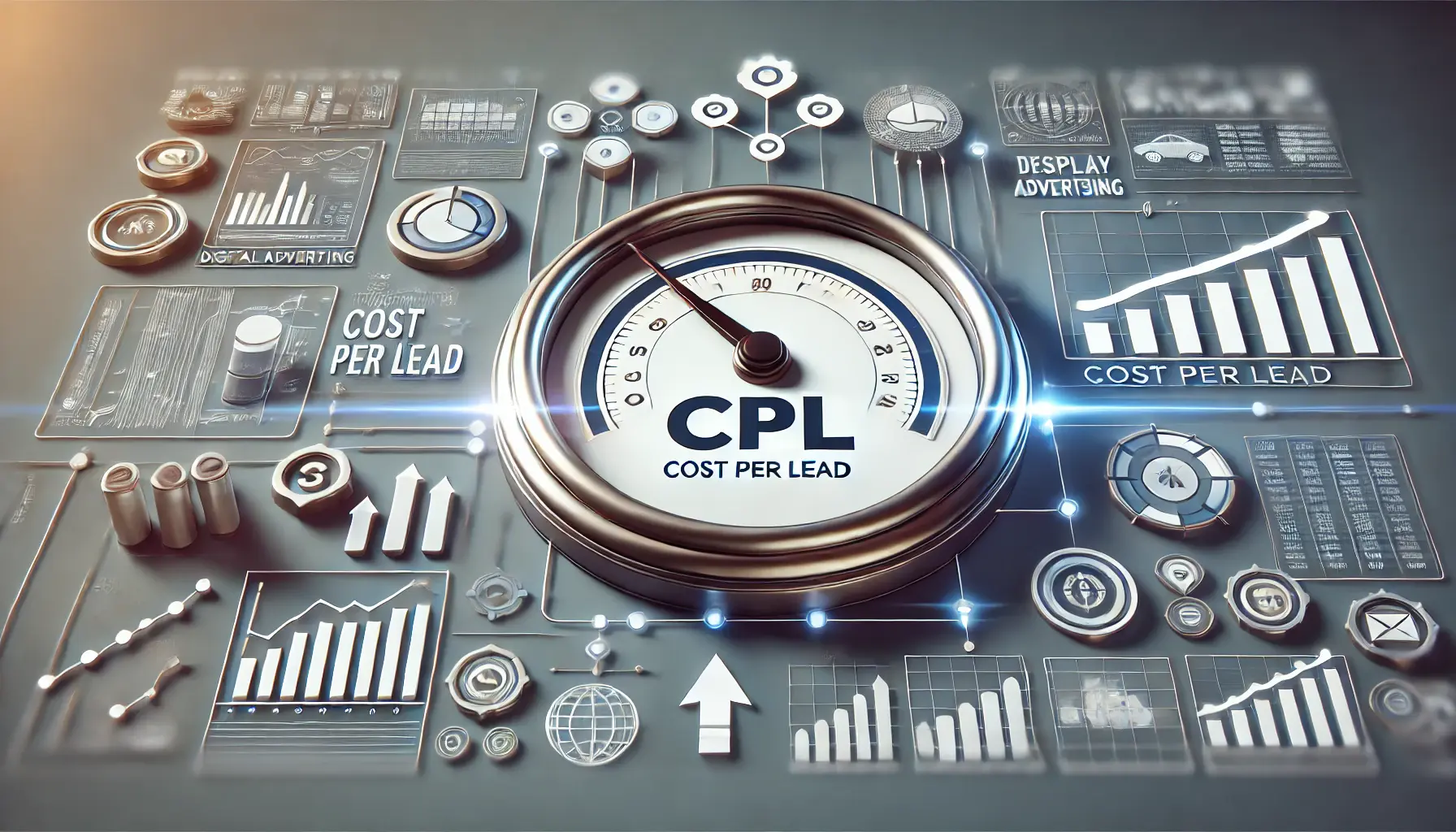
Visual representation of the importance of optimizing Cost Per Lead for better advertising performance.
Importance of Optimizing Cost Per Lead
Optimizing CPL isn’t just about saving money; it’s about ensuring your advertising efforts are sustainable and scalable.
A low CPL gives you the flexibility to test new ad strategies, expand your audience reach, and ultimately drive more growth.
Lowering CPL means your budget can stretch further, giving you room to experiment and continuously improve your campaigns.
Focusing on the right factors and applying targeted strategies will help lower your CPL in display ads, making your ad spend go further and helping you reach more potential customers.
Now we’ll go into specific methods to reduce CPL, starting with targeting the right audience to maximize ad effectiveness.
Cost Per Lead (CPL) is essential for evaluating the efficiency of ad spend. Lower CPL directly impacts ROI and campaign effectiveness, making it a crucial metric for marketers.

Visual representation of targeting the right audience to reduce Cost Per Lead.
Targeting the Right Audience to Lower Cost Per Lead
Effectively targeting the right audience is crucial for reducing Cost Per Lead (CPL) in display advertising.
By ensuring your ads reach individuals most likely to convert, you can enhance engagement and optimize your advertising budget.
Let’s explore strategies to refine your audience targeting.

Visual representation of audience segmentation for targeted marketing.
Utilizing Audience Segmentation
Audience segmentationDividing a target audience into specific groups for targeted marketing. involves the division of target customers into distinct groups, each differing based on specific characteristics.
By focusing on each segment, your ad targeting resonates more deeply with customers, ensuring a higher conversion rateThe percentage of users who complete a desired action, like filling out a form, after clicking an ad..
Some key segmentation criteria include:
- Demographics: Age, gender, income level, education, and occupation.
- Geographics: Location, climate, and regional preferences.
- Psychographics: Interests, lifestyle, values, and personality.
- Behavioral Data: Purchase history, brand interactions, and online behavior.
By analyzing these factors, you can create targeted ad campaigns that speak directly to the needs and desires of each segment, thereby reducing CPL.

Visual representation of creating personalized ad messaging for digital marketing.
Creating Personalized Ad Messaging
Personalization is a powerful tool in digital advertising.
Crafting ad messages that address the specific pain points and interests of your audience can significantly boost engagement.
Consider the following personalizationTailoring ad messages to specific user interests and behaviors. strategies:
- Dynamic Content: Utilize ad creative that dynamically changes based on viewer characteristics or behavior.
- Personalized Offers: Provide special offers or discounts relevant to individual preferences.
- Localized Messaging: Use local language, culture, or events to make ads more relevant.
Personalized messaging helps build a stronger connection with your audience, encouraging them to take action and reducing CPL.

Visual representation of using lookalike audiences to improve audience targeting.
Using Lookalike Audiences to Your Advantage
Lookalike audiences are groups of people who share similar characteristics with your existing customers.
Platforms like Google Ads and Facebook Ads allow you to create these audiences based on your customer data.
By targeting lookalike audiencesGroups of people who share characteristics with an advertiser’s existing customers., you can reach new potential customers who are more likely to convert, thus reducing CPL.
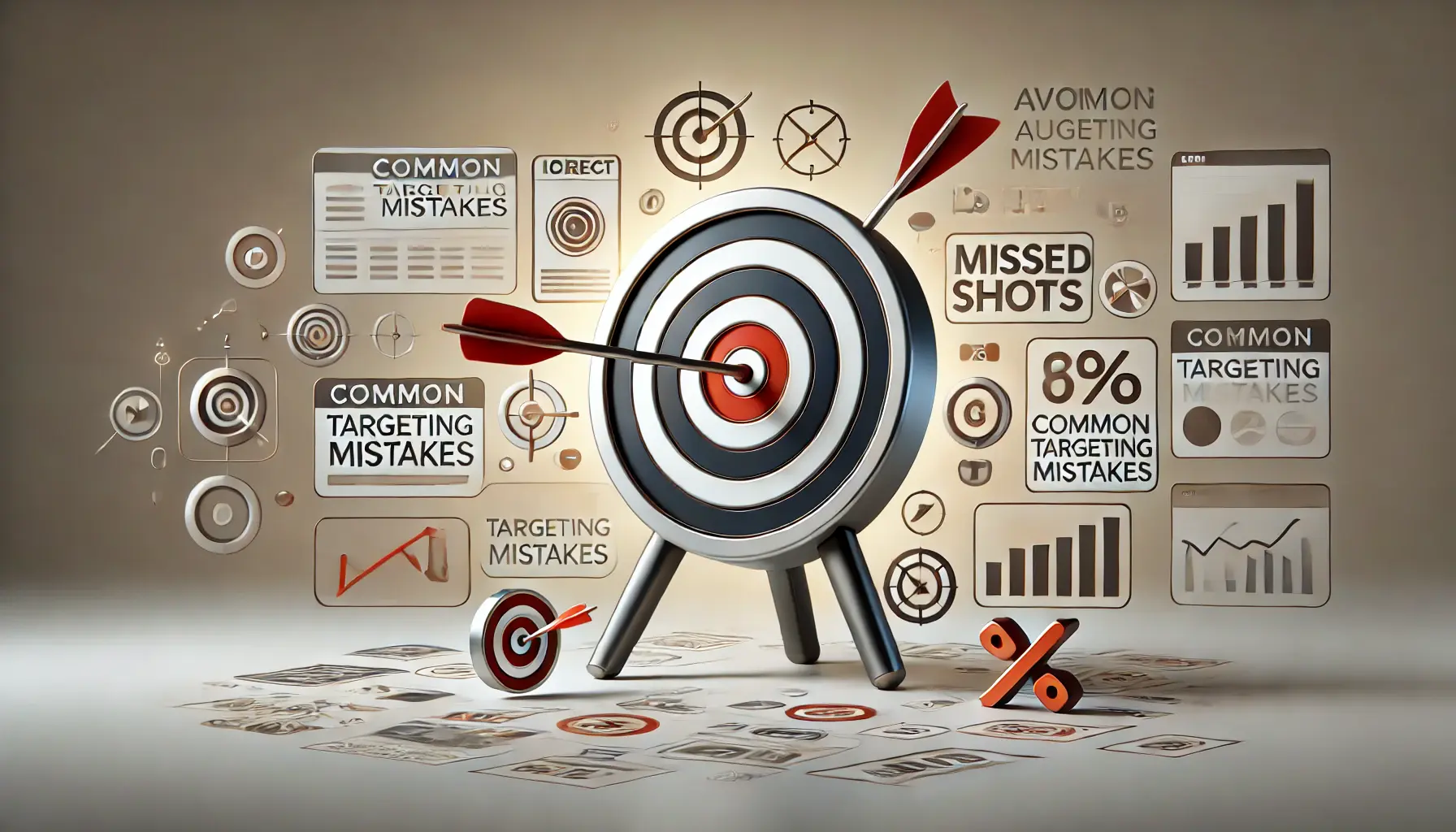
Visual representation of avoiding common targeting mistakes in digital advertising.
Avoiding Common Targeting Mistakes
While refining your audience targeting, it’s essential to avoid common pitfalls that can increase CPL:
- Over-Segmentation: Breaking down the target audience into too many small segments can lead to fragmented data and wasted ad spend.
- Ignoring Data Analysis: Failing to review performance data can lead to missed opportunities for optimization.
- Neglecting Audience Exclusions: Not excluding irrelevant audiences wastes budget on users unlikely to convert.
By recognizing and avoiding these mistakes, you can continuously optimize your targeting methods to effectively reduce CPL in display advertising.
Refining audience targeting ensures that ads reach those most likely to convert, which is crucial for lowering CPL and increasing conversion rates.
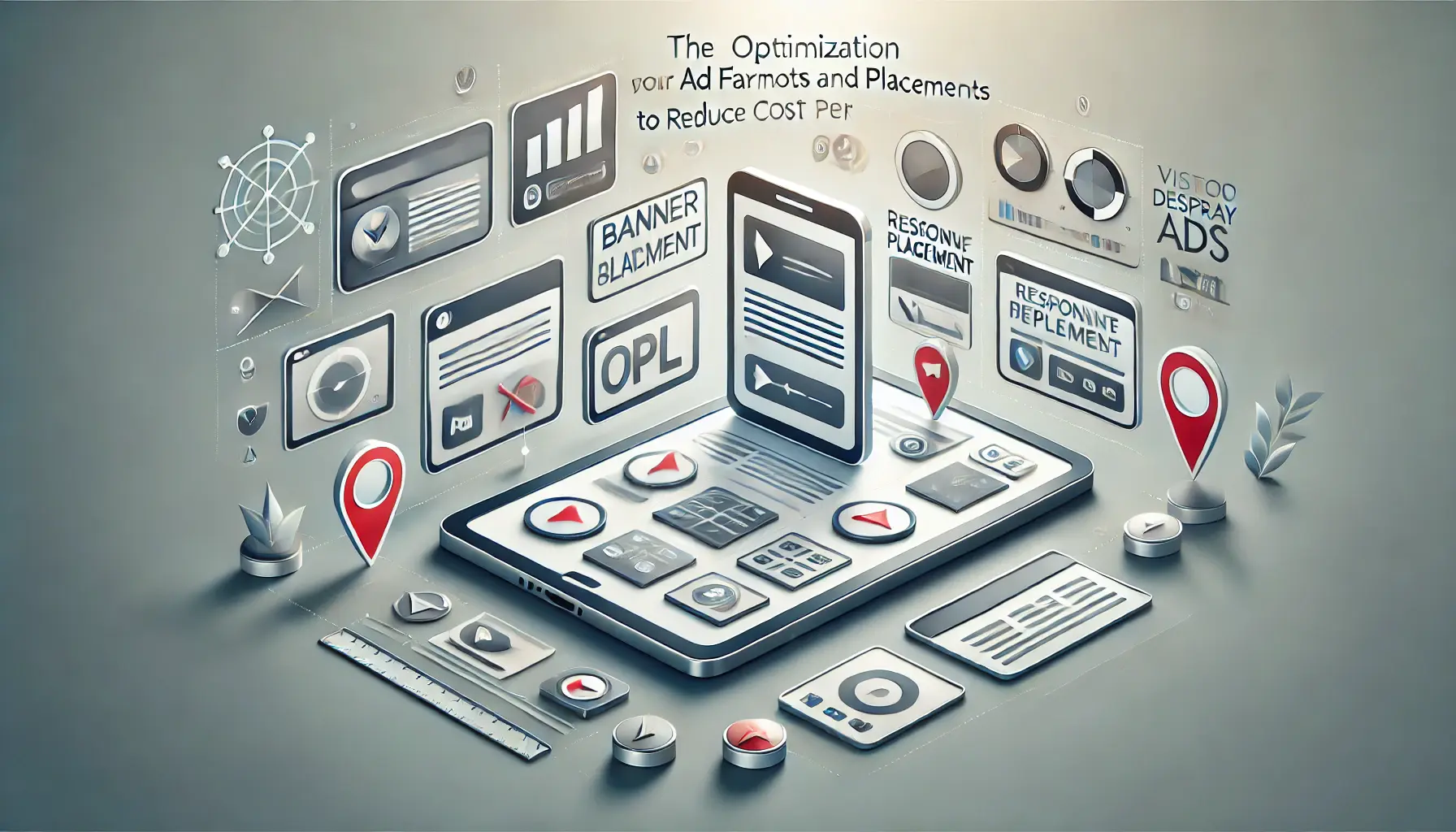
Visual representation of optimizing ad formats and placements for better Cost Per Lead performance.
Optimizing Ad Formats and Placement to Reduce Cost Per Lead
Selecting the appropriate ad formats and strategic placements is crucial for lowering Cost Per Lead (CPL) in display advertising.
By aligning your ad formats with your campaign objectives and placing them where your target audience is most active, you can enhance engagement and drive conversions more efficiently.
Let’s explore effective strategies for optimizing ad formats and placements.

Visual representation of choosing effective ad formats for digital advertising.
Choosing Effective Ad Formats
Ad format significantly affects user engagement and conversion rates.
Different formats cater to different user preferences and behaviors.
Consider the following ad formats:
- Responsive Display Ads: These ads automatically adjust their size, appearance, and format to fit available ad spaces, expanding your reach and adaptability.
- Banner Ads: Static or animated images that appear in specific areas of a webpage, useful for creating brand awareness.
- Video Ads: Engaging multimedia content that captures attention and effectively communicates messages.
- Interstitial Ads: Full-screen ads that cover the interface of their host application, ideal for high-impact messaging.
Choosing the right ad format according to your campaign goals and audience preferences results in higher engagement and a lower CPL.

Visual representation of strategic ad placement to maximize engagement and visibility.
Strategic Ad Placement
Placing your ads in locations where your target audience is most active increases the likelihood of engagement and conversion.
Consider the following placement strategies:
- Above the Fold: Positioning ads at the top of the webpage ensures visibility without requiring users to scroll.
- In-Feed Ads: Integrating ads within the content feed provides a seamless user experience, leading to higher engagement.
- Sidebar Ads: Ads on the sidebar remain visible as users scroll through content.
- End-of-Article Ads: Placing ads at the bottom of articles can capture the attention of engaged readers.
Testing placements and analyzing performance data can provide insights into the most effective positions for your ads, helping to reduce CPL.
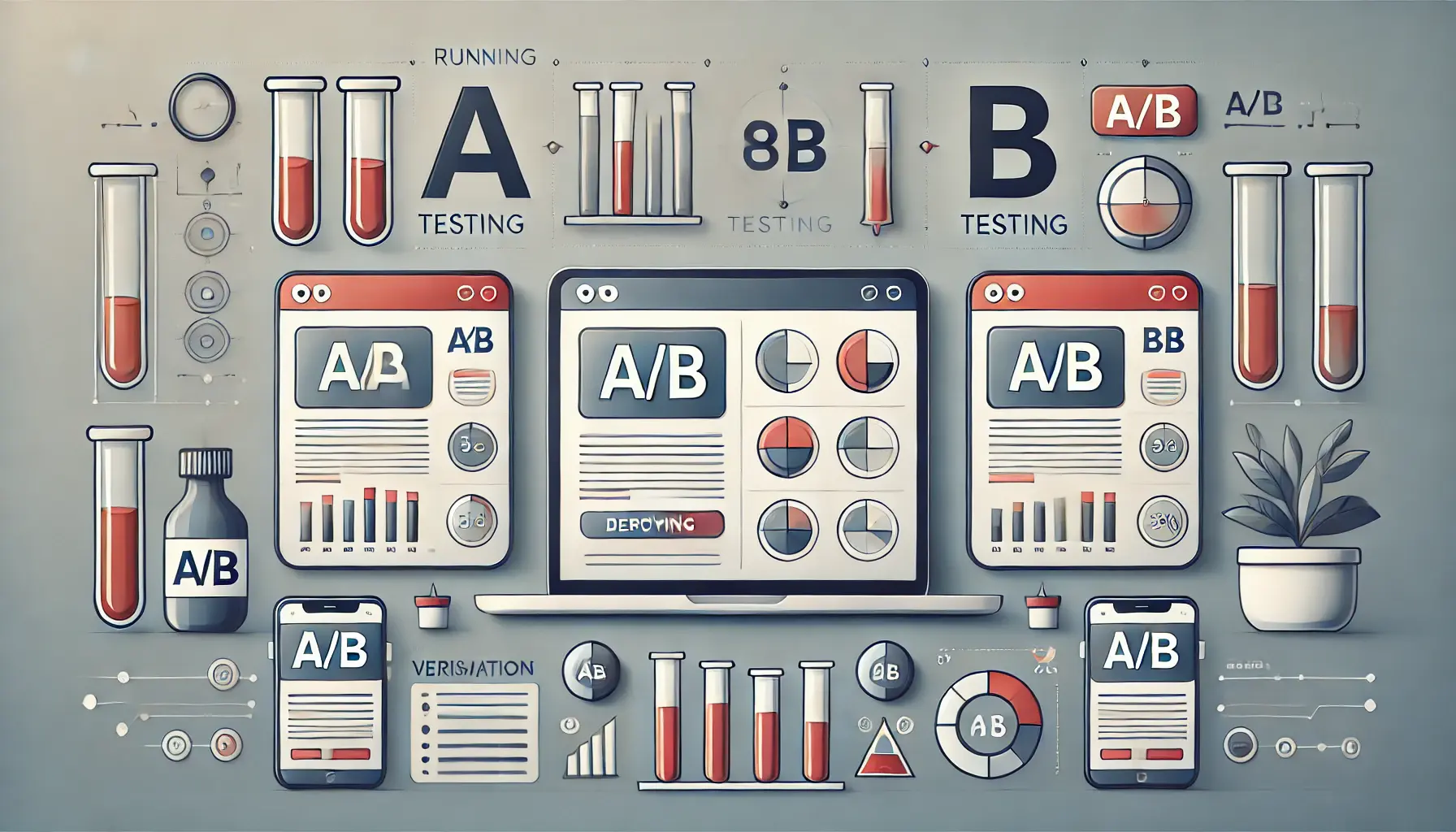
Visual representation of A/B testing in digital marketing to compare ad variations.
Run A/B Testing
A/B testing involves creating multiple variations of an ad to determine which performs better.
By testing different ad formats, designs, and placements, you can gather data-driven insights to optimize your campaigns.
Consider the following elements for A/B testingA method of comparing two versions of an ad or webpage to determine the more effective option.:
- Ad Copy: Test different headlines and calls-to-action to determine which resonates more with your audience.
- Visuals: Experiment with various images or videos to identify which captures more attention.
- Placement: Compare performance across different ad placements to determine the most effective positions.
Regular A/B testing allows for continuous optimization, leading to improved engagement and a lower CPL.
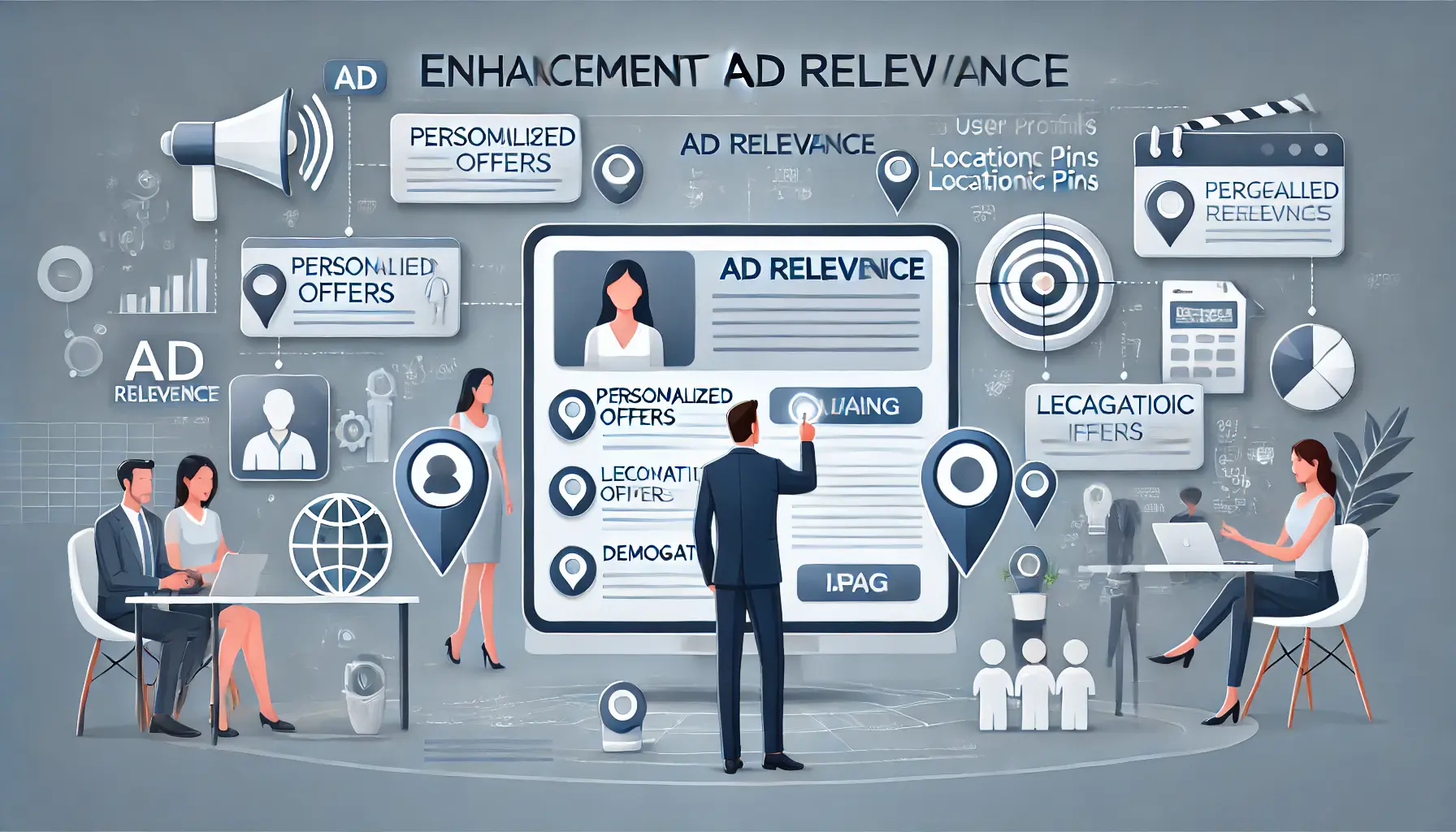
Visual representation of enhancing ad relevance through personalized targeting and tailored offers.
Enhancing Ad Relevance
Ensuring your ads are relevant to your target audience increases the likelihood of engagement and conversion.
Strategies to enhance ad relevance include:
- Audience Targeting: Utilize demographic, geographic, and behavioral data to reach the most relevant audience segments.
- Personalization: Tailor ad content to address the specific needs and interests of your targeted audience.
- Contextual Targeting: Place ads on websites or pages related to your product or service offerings.
By enhancing ad relevance, you can boost user engagement and lower CPL in your display advertising campaigns.
Choosing suitable ad formats and placements can significantly reduce CPL by enhancing visibility and engagement with potential leads.
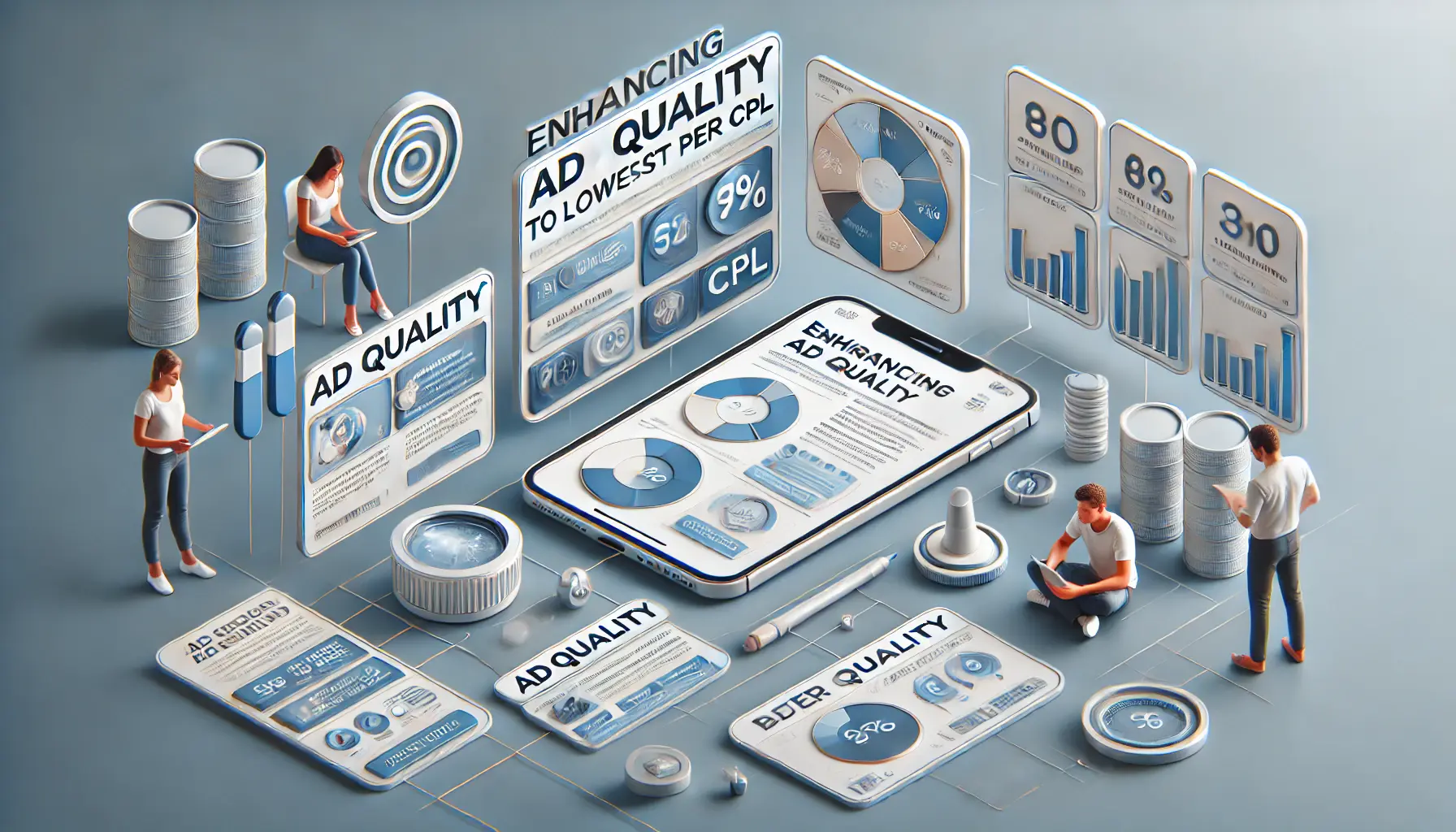
Visual representation of enhancing ad quality to reduce Cost Per Lead in digital marketing.
Enhancing Ad Quality to Lower Cost Per Lead
Improving the quality of your display ads is essential for reducing Cost Per Lead (CPL).
High-quality ads not only attract more attention but also encourage user engagement, leading to higher conversion rates.
Let’s explore strategies to enhance ad quality effectively.

Visual representation of crafting compelling and engaging visuals for digital ads.
Crafting Compelling Visuals
Visual appeal plays a significant role in capturing user interest.
To create compelling visuals:
- Use High-Resolution Images: Your images must be clear and professional to convey credibility.
- Maintain Brand Consistency: Colors, fonts, and imagery should align with your brand identity for a cohesive appearance.
- Add Catchy Elements: Utilize contrasting colors and bold typography to grab attention.
By focusing on these elements, your ads can stand out and attract more potential leads.

Visual representation of the creative process behind writing effective ad copy for digital ads.
Writing Effective Ad Copy
Your ad copy should be concise and persuasive to encourage users to act.
Consider the following tips:
- Highlight Unique Selling Points (USPs): Clearly state what makes your product or service unique.
- Include a Strong Call-to-Action (CTA): Use action-oriented language to prompt an immediate response.
- Appeal to Audience Pain Points: Show how your offering can solve specific problems or fulfill needs.
Effective ad copy can significantly boost click-through rates and conversions, thereby lowering CPL.
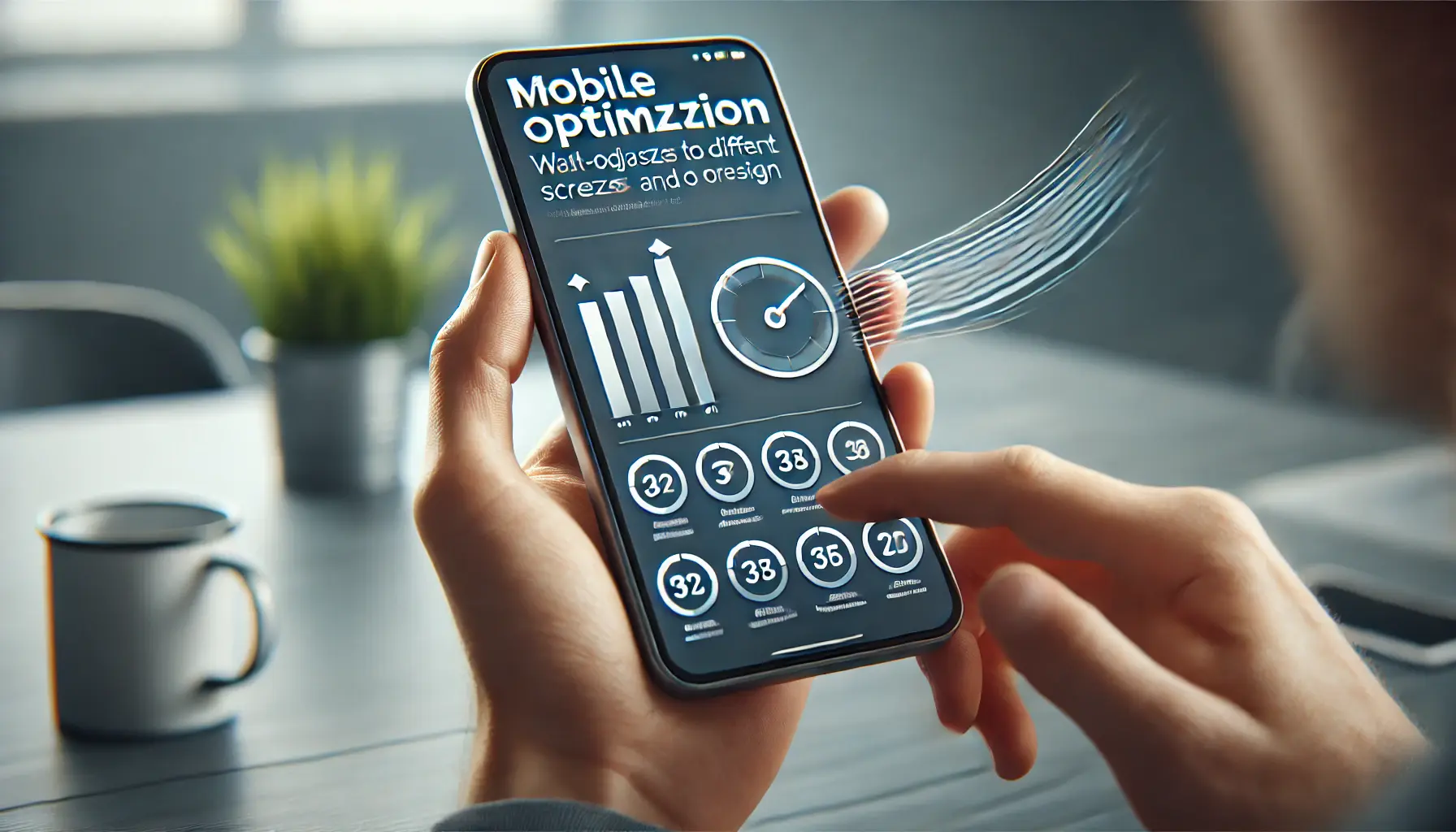
Visual representation of mobile optimization for digital ads, showcasing responsive design.
Mobile Optimization
With more users consuming content on mobile devices, ensure your ads are optimized for this platform:
- Responsive Design: Make sure ads adapt to various screen sizes and orientations.
- Optimize Load Times: Minimize loading delays by compressing images and optimizing code.
- Test Across Devices: Verify ad performance on a variety of mobile devices and browsers.
Mobile optimization enhances user experience, increases engagement, and lowers CPL.

Visual representation of following platform guidelines for digital ad compliance.
Following Platform Guidelines
Each advertising platform has specific guidelines for constructing ads to ensure approval and optimal performance:
- Review Platform Policies: Familiarize yourself with content, size, and format requirements.
- Leverage Provided Tools: Utilize platform-provided tools for creating and testing ads.
- Stay Updated: Keep up to date with changes in platform policies or best practices.
Adhering to platform guidelines helps prevent ad disapprovals and ensures your ads perform effectively.

Visual representation of implementing A/B testing to optimize ad performance.
Implementing A/B Testing for Continuous Improvement
Constant testing of different ad elements lets you determine what resonates best with your audience:
- Analyze Performance Metrics: Evaluate results based on click-through rates, conversions, and CPL.
- Iterate Findings: Use insights gained to refine and improve future ad creatives.
Continuous A/B testing drives ongoing optimization, resulting in higher-quality ads and lower CPL.
High-quality visuals and effective ad copy not only capture attention but also drive engagement, leading to a lower CPL.

Visual representation of using data analytics to reduce Cost Per Lead in digital advertising.
Leveraging Data Analytics to Reduce Cost Per Lead
Utilizing data analytics is essential for optimizing your display advertising campaigns and reducing Cost Per Lead (CPL).
By analyzing performance metrics, you can make informed decisions to enhance your strategies and achieve better results.
Let’s explore how data analytics can help lower your CPL.
Visual representation of tracking KPIs in digital advertising through performance metrics and data analysis.
Tracking Key Performance Indicators (KPIs)
Certain KPIs allow you to assess the performance of your campaigns effectively.
Focus on the following metrics:
- Click-Through Rate (CTR): The percentage of users who click on your ad after viewing it. A high CTR indicates that your ad is performing well in relevance and attracting interest.
- Conversion Rate: The percentage of users who complete a desired action, such as filling out a form or making a purchase, after clicking on your ad. A high conversion rate suggests that your landing page and offer are compelling.
- Cost Per Click (CPC): The amount paid for each click on your ad. Lowering CPC can help reduce your overall CPL.
Regularly analyzing these KPIs enables you to identify areas for improvement and adjust your campaigns accordingly.
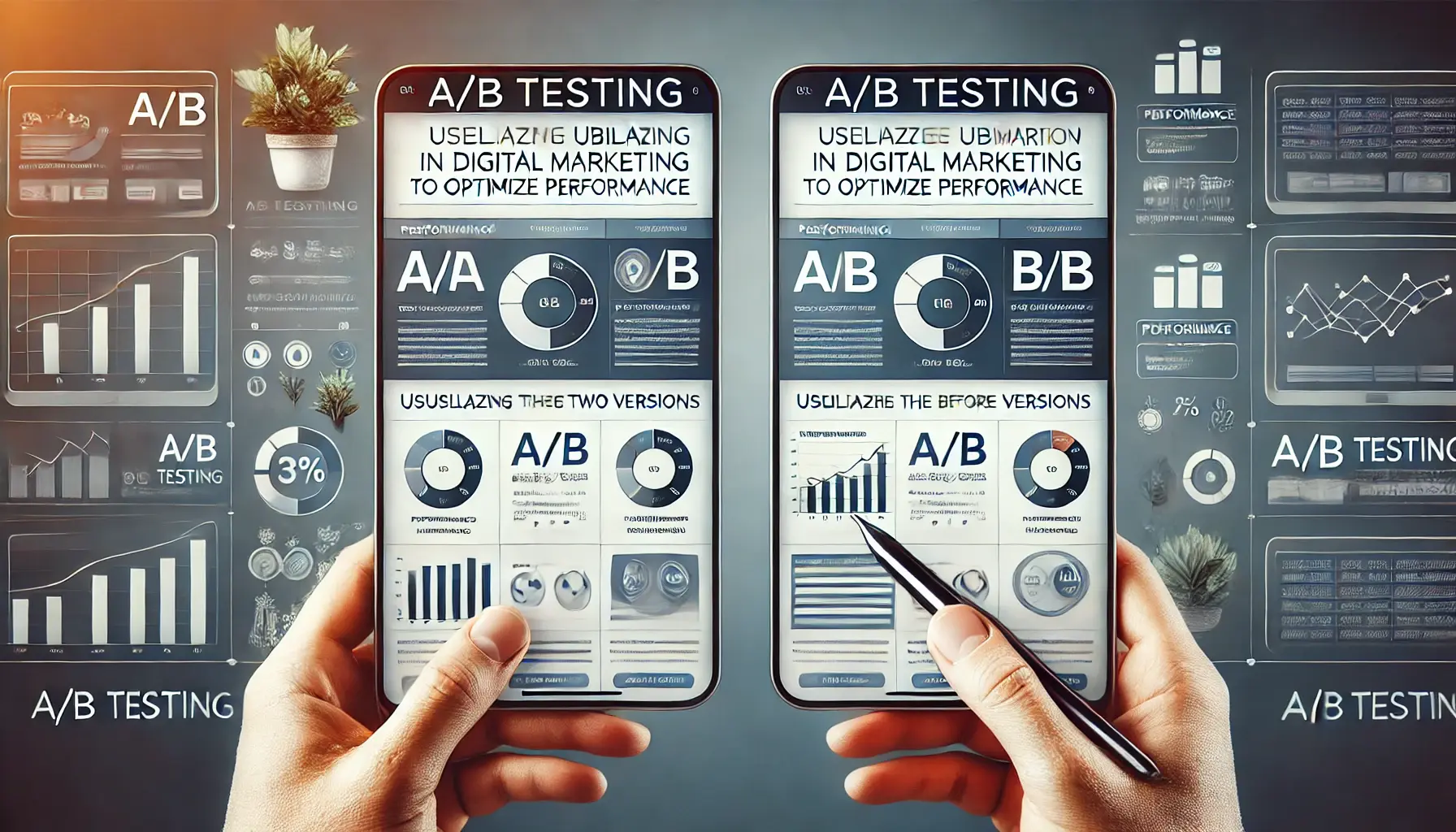
Visual representation of utilizing A/B testing to compare ad variations and optimize performance.
Utilizing A/B Testing
A/B testing involves comparing two versions of an ad or landing page to determine which performs better.
Implement A/B testing to:
- Test Ad Variations: Experiment with different headlines, images, and calls-to-action to see which combinations yield the highest engagement.
- Optimize Landing Pages: Assess various layouts, content, and forms to identify the most effective design for conversions.
By continuously testing and refining your ads and landing pages, you can enhance performance and lower CPL.

Visual representation of segmenting your audience for targeted marketing.
Segmenting Your Audience
Dividing your audience into distinct segments based on demographics, behavior, or interests allows for more targeted advertising.
Benefits of audience segmentation include:
- Personalized Messaging: Create targeted advertisements that resonate with specific segments, improving engagement and conversion rates.
- Efficient Budget Allocation: Focus resources on segments with higher conversion potential, optimizing ad spend.
Effective segmentation results in more relevant ads, improved performance, and reduced CPL.
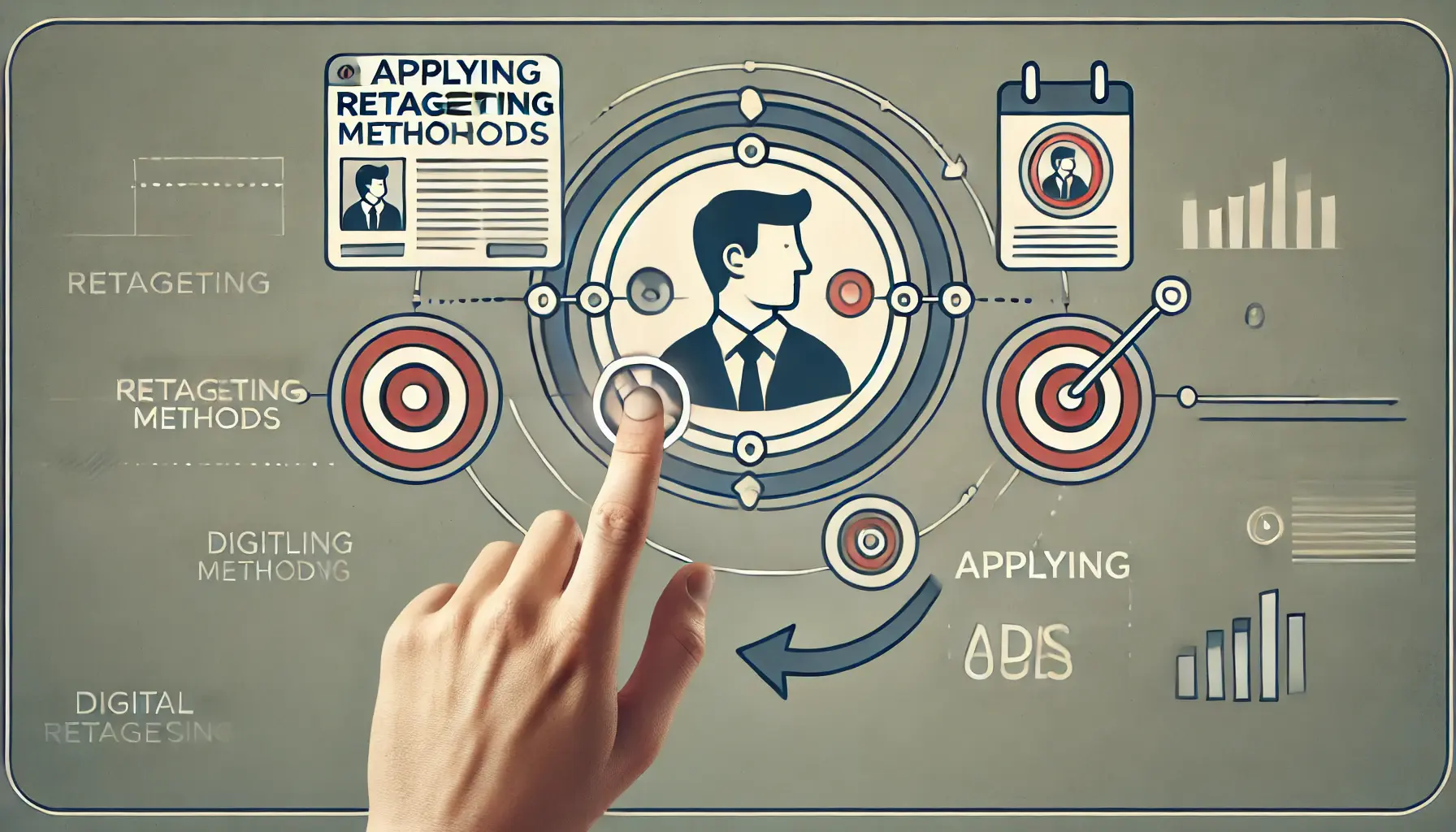
Visual representation of applying retargeting methods to re-engage users in digital advertising.
Applying Retargeting Methods
Retargeting involves showing ads to users who have previously interacted with your website or ads but did not convert.
Benefits of retargetingShowing ads to users who previously visited a site or interacted with content. include:
- Increased Brand Recall: Reminds potential customers of your offerings, keeping your brand top-of-mind.
- Higher Conversion Rates: Engages users who have already shown interest, increasing the likelihood of conversion upon subsequent interactions.
Incorporating retargeting into your strategy can boost conversions and lower CPL.

Visual representation of analyzing competitor performance through digital metrics and KPIs.
Analyzing Competitor Performance
Understanding how your competitors perform can provide valuable insights for your campaigns.
Consider the following:
- Benchmarking: Compare your KPIs against industry standards to identify areas for improvement.
- Identifying Opportunities: Analyze competitor strategies to uncover market gaps you can exploit.
Leveraging competitor analysis can refine your approach and achieve a more competitive CPL.
By effectively utilizing data analytics, you can make informed decisions to optimize your display advertising campaigns, lower Cost Per Lead, and improve your return on investment.
Data analytics allows for continuous improvement by analyzing KPIs and optimizing campaigns, which helps in reducing CPL over time.

Visual representation of reducing Cost Per Lead in display advertising through optimization and performance metrics.
Summary: Reducing Cost Per Lead in Display Advertising
Ultimately, the essence of Cost Per Lead (CPL) optimization for display advertising lies in deriving more value from your marketing efforts and achieving sustainable growth.
By adopting a strategic approach—better targeting of your audience, selecting appropriate ad formats, enhancing ad quality, and applying data-driven optimizations—you can significantly reduce CPL while raising your return on investment.
This summary provides a cohesive guide to help lower the CPL of your display ads, encapsulating the key methods discussed in this article.
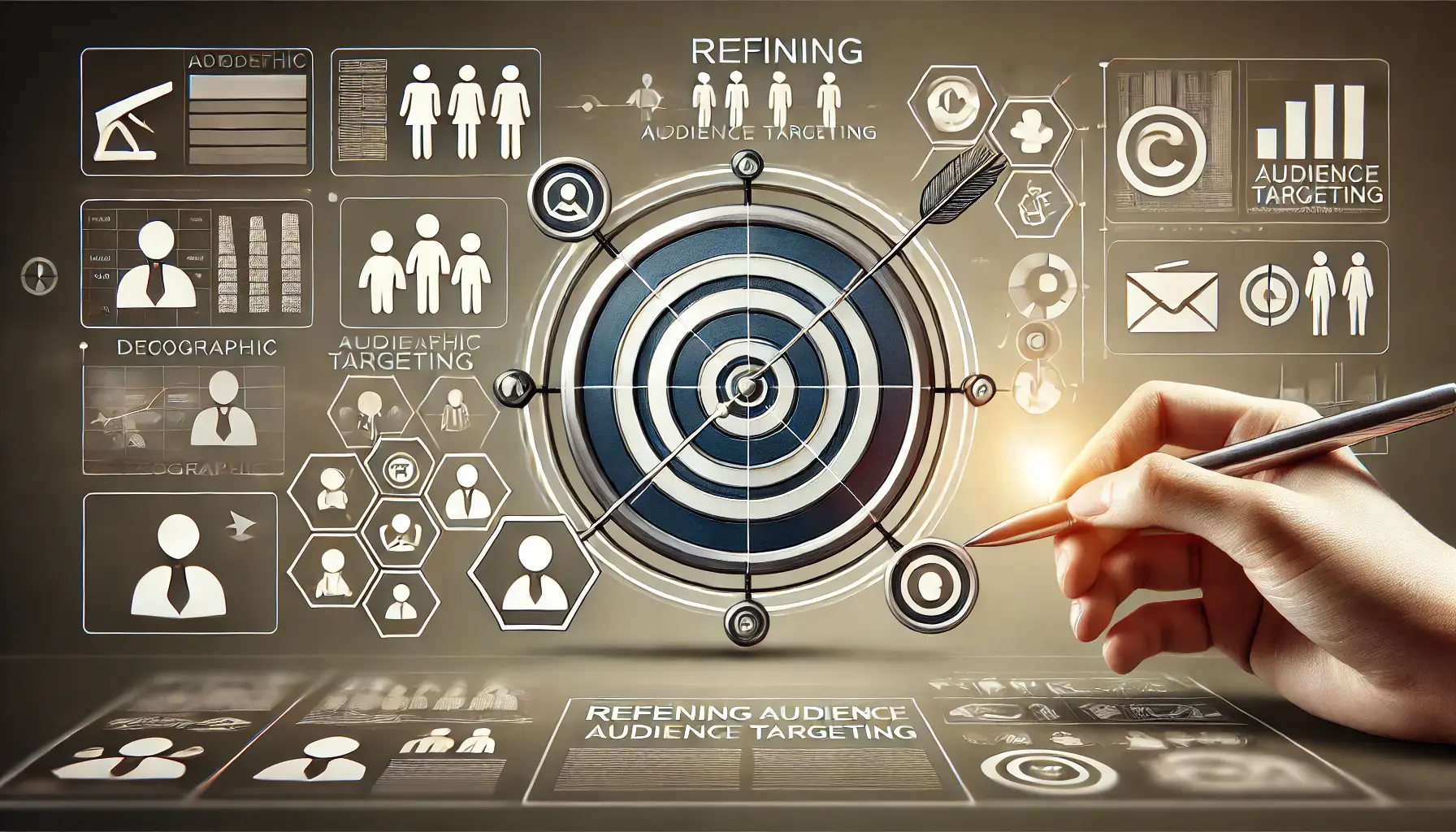
Visual representation of refining audience targeting through demographic, geographic, and behavioral segmentation.
Refining Audience Targeting
The foundation of reducing CPL begins with precise audience targeting.
By segmenting your audience based on demographics, behavior, and interests, you can create ads that resonate with specific groups, increasing engagement and conversions.
Key tactics include:
- Using audience segmentation to deliver more personalized ads.
- Applying lookalike audiences to expand reach to similar prospects.
- Avoiding common targeting mistakes, such as over-segmentation or neglecting data analysis.

Visual representation of optimizing ad formats and placements for effective digital advertising.
Optimizing Ad Formats and Placement
Choosing the right ad formats and placements is another critical step to lower CPL.
Display ads offer various formats and positions that can align with your campaign goals and audience preferences.
Effective strategies include:
- Testing different ad formats, such as responsive display ads, banners, and video ads.
- Positioning ads strategically, whether above the fold, within content feeds, or at the end of articles.
- Running continuous A/B tests to refine ad format and placement decisions based on performance data.
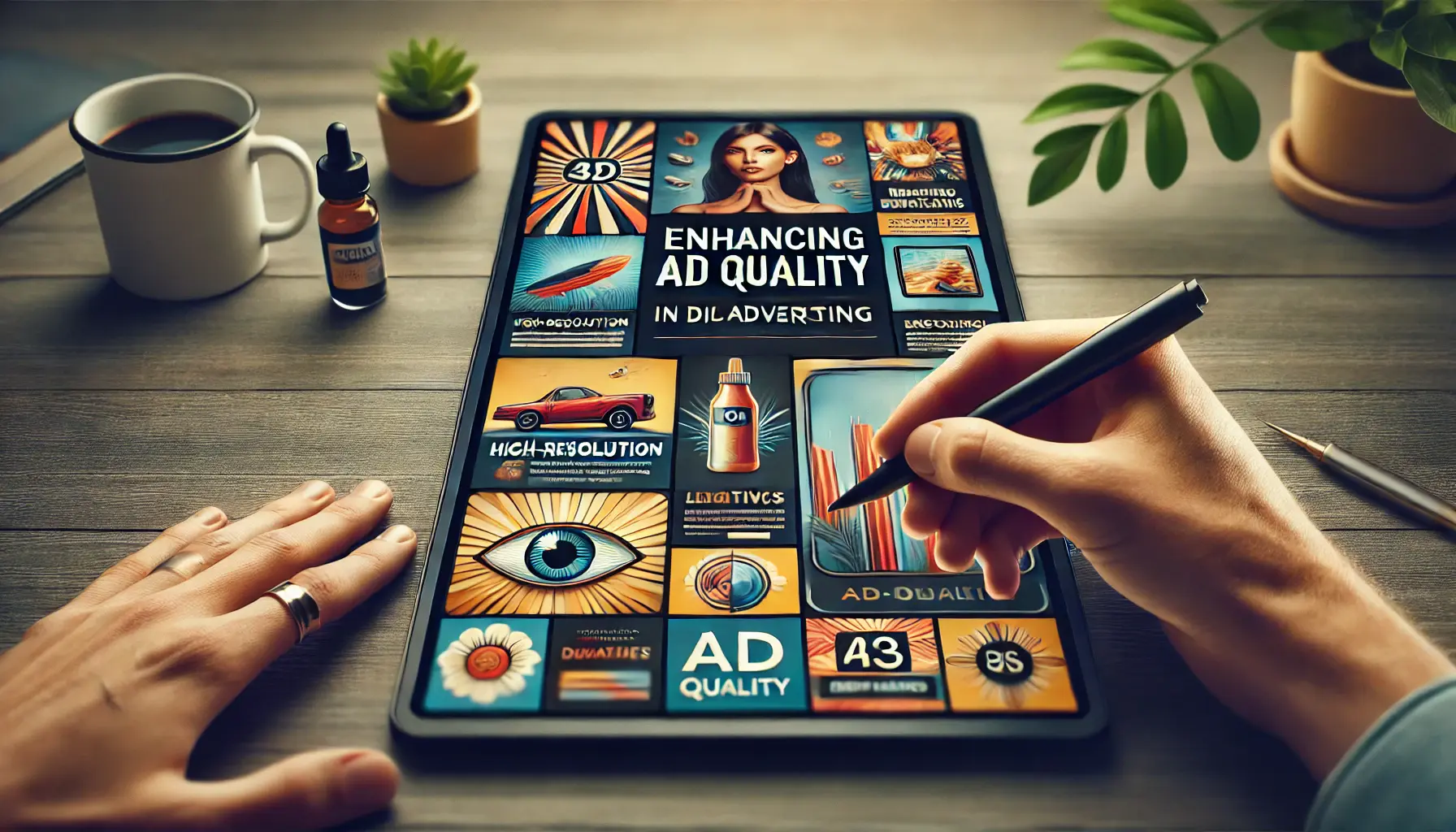
Visual representation of enhancing ad quality with vibrant and professional visuals.
Enhancing Ad Quality
High-quality ads are essential for attracting attention and boosting conversions.
By focusing on visual appeal, compelling ad copy, and mobile optimization, you can ensure that your ads resonate with your audience and drive more leads.
Key elements include:
- Crafting compelling visuals that are professional, brand-consistent, and eye-catching.
- Writing persuasive ad copy that highlights unique selling points and includes strong calls-to-action.
- Optimizing ads for mobile to reach users on various devices and enhance user experience.

Visual representation of using data analytics for continuous improvement in digital marketing.
Leveraging Data Analytics for Continuous Improvement
Data analytics enables you to make informed adjustments to your campaigns, helping reduce CPL over time.
Key practices involve:
- Tracking key performance indicators like click-through rates, conversion rates, and cost per click.
- Implementing A/B testing to assess and refine different ad and landing page elements.
- Applying audience segmentation and retargeting to reach the most receptive segments and improve ad relevance.

Visual representation of incorporating retargeting and competitor analysis in optimizing digital ad campaigns.
Incorporating Retargeting and Competitor Analysis
Retargeting keeps your brand top-of-mind for users who have shown interest in your ads, increasing their likelihood to convert.
Additionally, competitor performance analysis can provide an advantage in positioning your ads competitively.
These tactics include:
- Utilizing retargeting methods to engage users who showed interest but did not convert.
- Comparing your KPIs against industry benchmarks to identify areas for improvement.
- Identifying market gaps by studying competitors, allowing you to stand out effectively.
In conclusion, reducing Cost Per Lead in display advertising is a comprehensive process that combines targeted strategies with quality optimizations.
By integrating these practices, you can lower CPL while enhancing overall ad effectiveness, ensuring a greater return on investment from your advertising budget.
Remember, continuous testing and adaptation are key to succeeding in an increasingly competitive digital landscape.
Reducing CPL requires a strategic approach, focusing on targeting, ad format optimization, ad quality, and data-driven improvements.
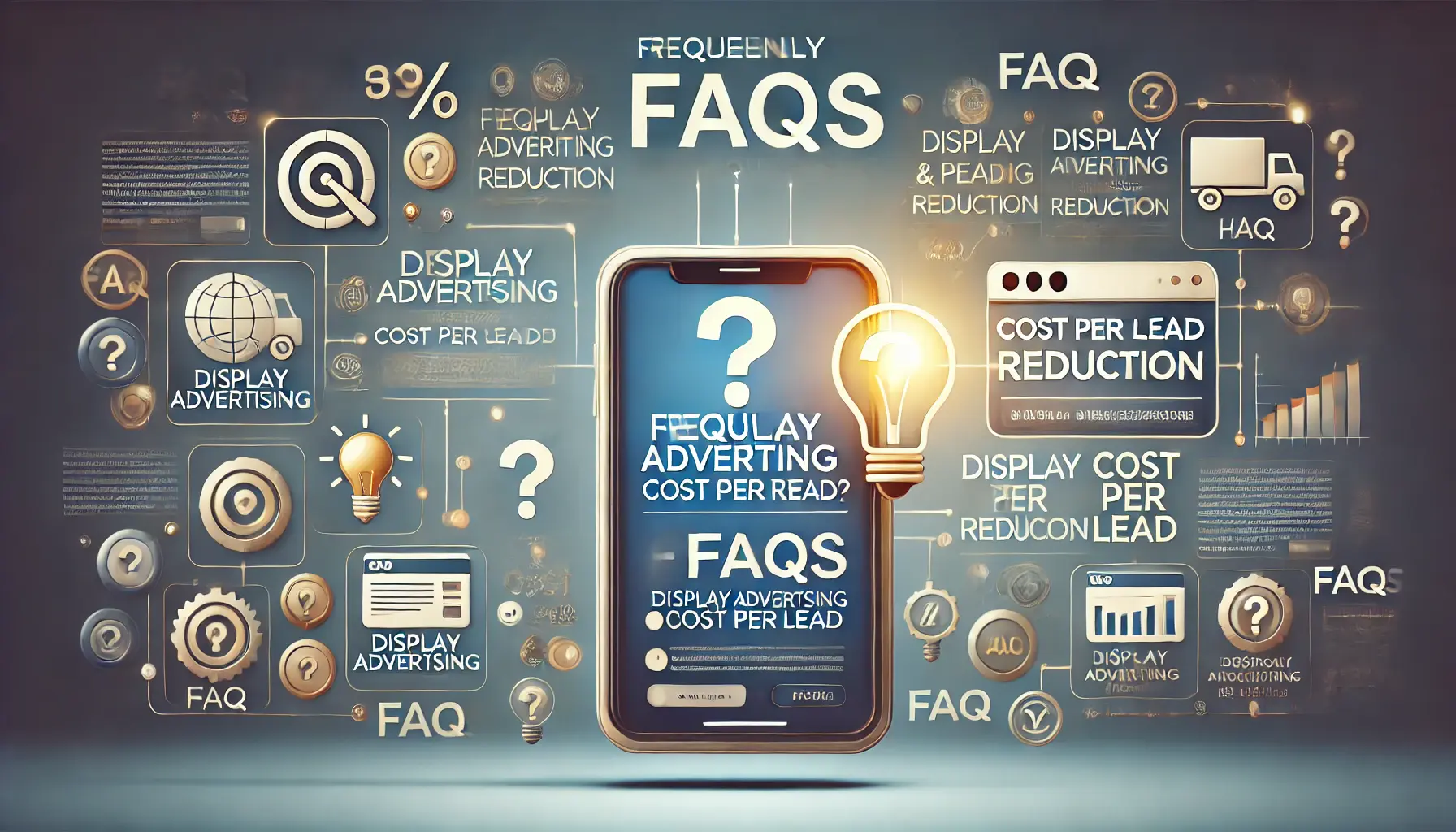
Visual representation of frequently asked questions regarding cost per lead reduction in display advertising.
Your campaigns can be managed by an agency specialized in Google Ads, check out our service page.
Display Advertising Cost Per Lead Reduction: Frequently Asked Questions
Many questions have been asked about how to improve your Cost Per Lead (CPL) in display advertising.
Below are answers to some of the most common questions.
CPL is the cost incurred to acquire a lead via a display ad.
It serves as a measure of campaign efficiency.
Reducing CPL improves ROI by generating more leads within the same budget, maximizing marketing value.
Accurate targeting reaches potential customers, boosting conversions and thereby reducing CPL.
Responsive display ads and video ads generally yield higher engagement, contributing to a lower CPL.
High-quality visuals and effective ad copy capture attention, leading to better engagement and lower CPL.
Analyzing performance metrics allows for informed adjustments, optimizing campaigns to reduce CPL.
Testing ad elements identifies what works best, refining strategies and contributing to a lower CPL.
Retargeting re-engages previous visitors, increasing the likelihood of conversion and potentially lowering CPL.
Understanding competitor strategies helps identify market gaps, enabling more effective campaigns and a reduced CPL.


